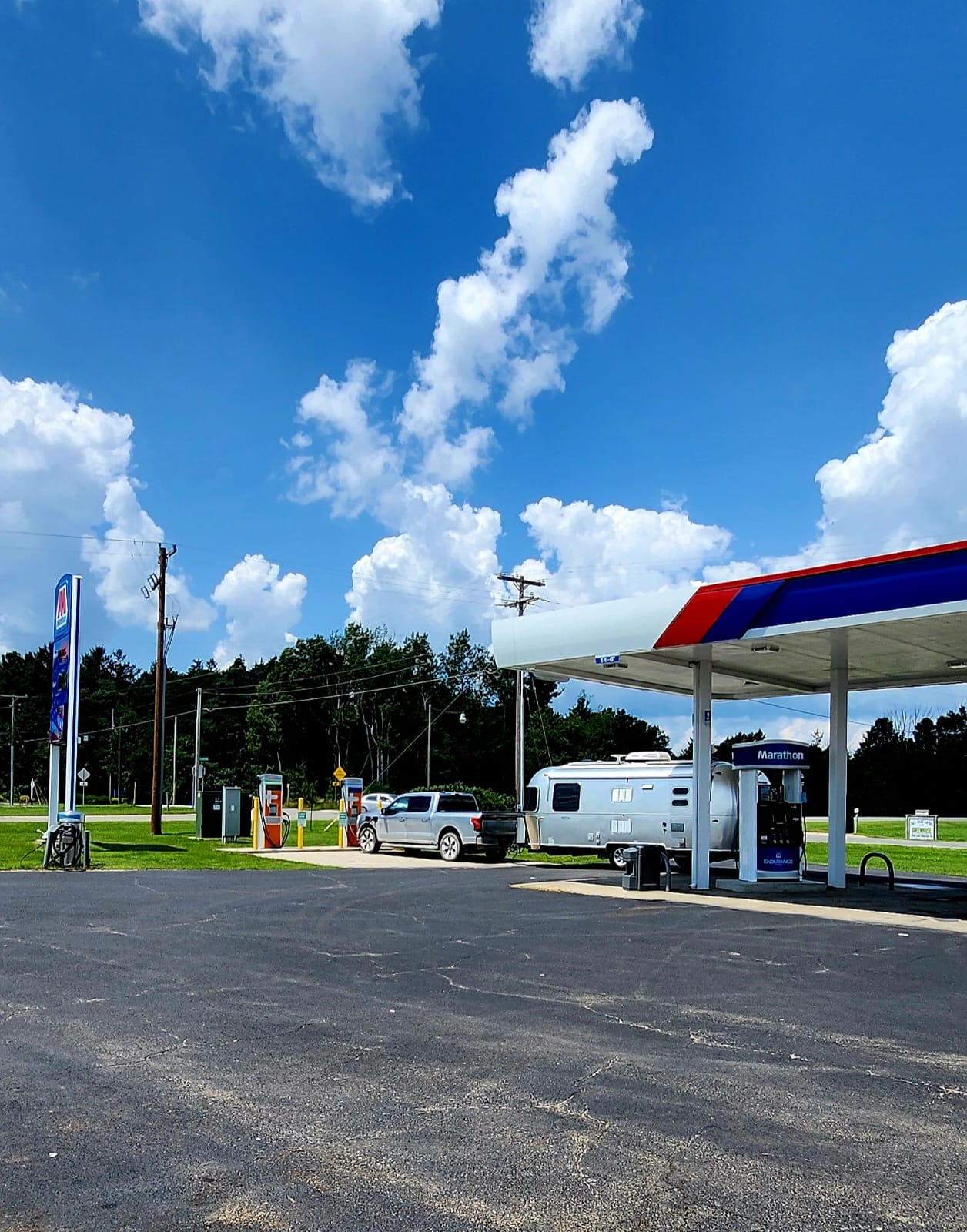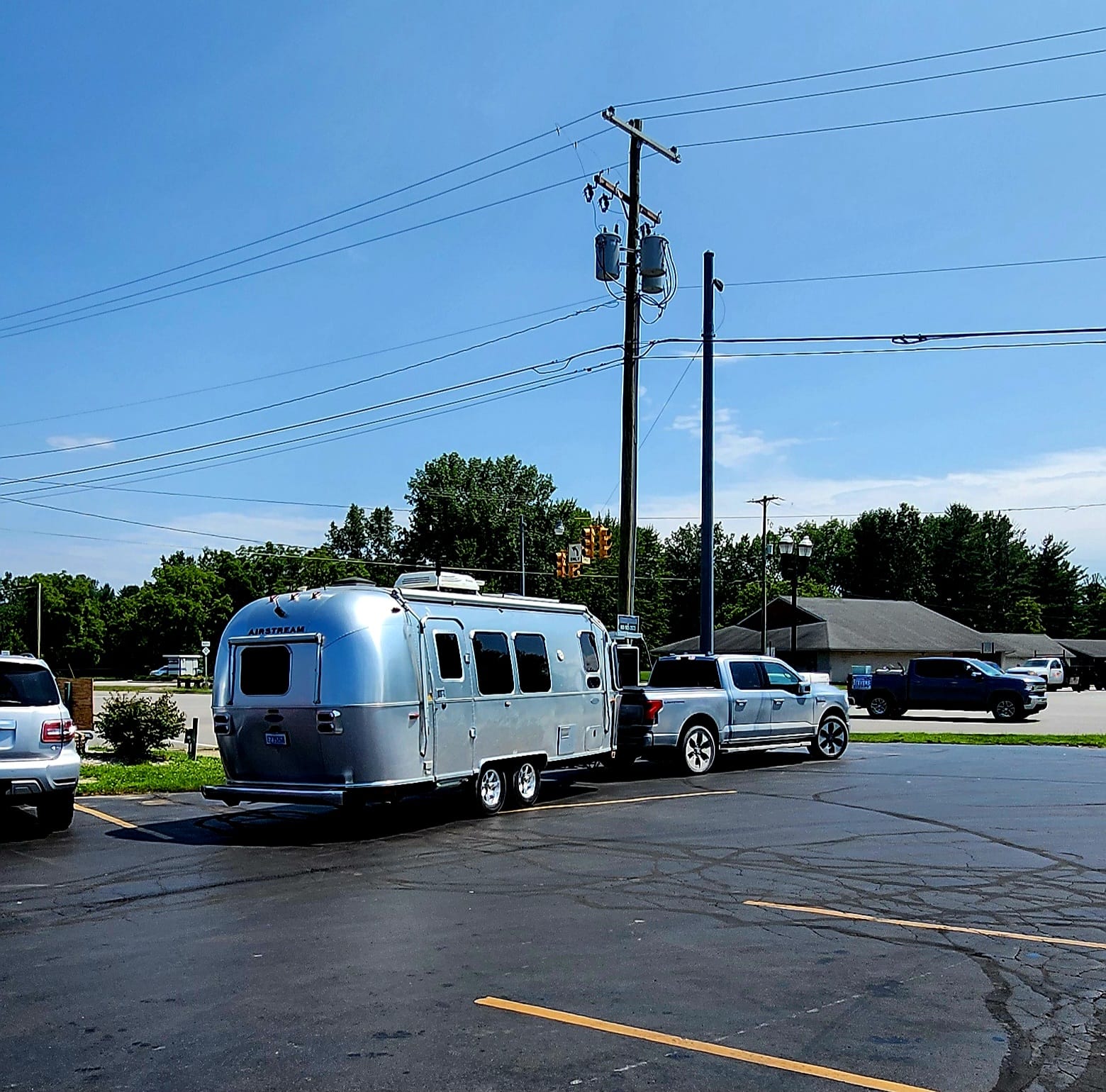2 Years on towing with the Lightning
It has been two years since we picked up the Lightning, and I wanted to discuss what has changed. Many of my first posts focused on the present rather than the future. Well, here we are in the future.
I planned a trip from Standish to Duck Creek RV Park in Muskegon. I followed the same process I outlined two years ago:
- Plug the destination into the FordPass App and chuckle at the recommendations.
- Go to ABRP and see what the recommendations were.
- Go to PlugShare and validate the reviews of chargers and the general path.
- Look at Google Earth and determine if a trailer can park next to the charger.
I plan my stops with the idea that I can double back (with a trailer) to another alternative. This is probably a byproduct of my aviation background, but I always have a diversion “charger” in play. With that in mind, I planned three stops on our drive and was pleasantly surprised:
- The Red E Chargers in Michigan are excelling in speed and reliability. They are smart about network planning, placing chargers at grocery stores and fast food stops where people on road trips will likely stop and replenish.
- ChargePoint continues to be a solid option (with the app) despite having the oldest pedestals I have encountered. They aren’t the fastest, but they are online if the app says they are.
- Two of my three stops were designed with towing in mind, and I could pull into spots without disconnecting or making a 300-point turn around something.
This same trip two years ago was nearly impossible without long stretches out of the way. I could have stopped once and made it straight through.
Macro-level changes I have made:
- Tesla SuperChargers are dependable, and my first option is if they have a MagicDock or support a converter. I won’t bother with an Electrify America site if a Tesla one is nearby.
- Given that charging stations are more dependable and plentiful, I charge 80% and move on. In prior years, I wouldn’t risk that.
- The backroads of Michigan are gorgeous, and I can often get 1.1-1.3 mi/kWh on them, given the change in speeds and drafting. On top of being safer, it’s also better for range.
- I can charge at my destination. I used to plan on arriving with 80% because I wasn’t sure what would happen when I stopped. Most campgrounds will catch up with this, and I am happy to pay for the option, but right now, I know I will top off when I stop to camp.
- Getting the Airstream moving is easy, and stopping is more problematic, but I realize that range depends less on the size of the object and more on how I drive.
Outside of the mirrors of my 2017 F-150, which are HUGE, I now prefer the Lightning. It’s faster off the line, more straightforward to stop with, and rides incredibly smooth. The charging network is night and day; that was our biggest issue. Given how much attention Big Gretch has given EV charging in the state, I am excited for the day when I can grab Ada, hitch up, and go without thinking about it.
We are close.




